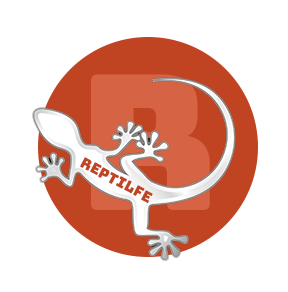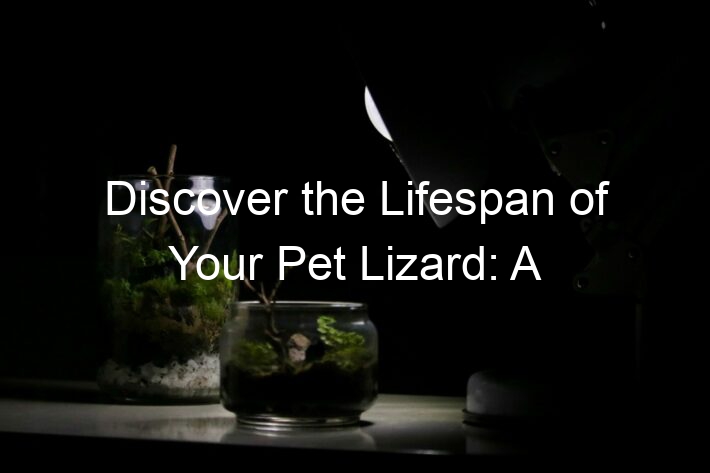Introduction to Reptile Molting Process
Welcome to our exploration of the fascinating world of reptiles and their molting process. This natural phenomenon is not only intriguing but also crucial to the life cycle of these cold-blooded creatures.
-
- Definition of Reptile Molt:
Molting, also known as ecdysis, is a process that reptiles undergo to shed their old, outgrown skin. Unlike humans who shed skin cells continuously, reptiles do it all at once. This process allows them to grow and also to repair any damage on their existing skin. It’s a bit like getting a brand new outfit, but for reptiles!
-
- Importance of Molt Process in Reptiles:
The molting process is of paramount importance to reptiles for several reasons. Firstly, it allows for growth. As reptiles grow, their old skin becomes too tight and must be replaced with new, larger skin. Secondly, molting helps to repair any damage to the skin. If a reptile’s skin is injured or infected, the molt process allows for the removal of the affected skin and the growth of healthy new skin. Lastly, the process of molting helps reptiles to get rid of parasites that may have attached to their old skin. In essence, molting is a vital process for the health and survival of reptiles.
Now that we have a basic understanding of what reptile molting is and why it’s important, let’s delve deeper into this fascinating process in the following sections.
Understanding Reptile Molt
Reptiles are fascinating creatures, and one of their most intriguing behaviors is the process of skin shedding, also known as molting. This is a natural process that all reptiles go through as they grow and develop. Let’s delve into the stages of reptile skin shedding to better understand this marvel of nature.
Stages of Reptile Skin Shedding
Reptile skin shedding occurs in three main stages: the pre-shedding stage, the shedding stage, and the post-shedding stage. Each stage plays a crucial role in the overall health and growth of the reptile.
-
- Pre-shedding stage
In the pre-shedding stage, the reptile’s skin starts to lose its shine and may appear dull or cloudy. This is due to a new layer of skin forming underneath the old one. The reptile’s eyes may also take on a bluish tint, which is a clear sign that shedding is about to begin. This stage can last for a few days to a week.
-
- Shedding stage
The shedding stage is when the old skin begins to peel off. Reptiles will often rub against rocks, branches, or other rough surfaces to help remove the old skin. This stage can be a bit stressful for the reptile, but it’s a necessary part of their growth and development. The shedding process can take anywhere from a few hours to several days, depending on the size and species of the reptile.
-
- Post-shedding stage
Once all the old skin has been shed, the reptile enters the post-shedding stage. During this time, the new skin hardens and takes on its normal color. The reptile may also be more active and have a stronger appetite after shedding. This stage signifies the end of the molting process and the beginning of a new growth cycle.
Understanding the stages of reptile skin shedding can provide valuable insights into the health and well-being of these fascinating creatures. It’s a testament to the marvels of nature and the intricate processes that enable life to thrive and evolve.
Factors Influencing Reptile Molt
Just like humans, reptiles also experience changes in their bodies. One of these changes is molting, a process where reptiles shed their old skin to make way for new growth. However, this process is influenced by several factors. Let’s delve into these factors:
-
- Age and Growth Rate
Young reptiles tend to molt more frequently than their older counterparts. This is because they are in a rapid growth phase, and their skin needs to shed more often to accommodate this growth. As reptiles age, their growth rate slows down, and so does their molting frequency.
-
- Environmental Conditions
The environment in which a reptile lives can greatly affect its molting process. For instance, reptiles living in dry conditions may have difficulty shedding their skin, as the lack of moisture can cause the old skin to stick. On the other hand, those in humid environments may find the process easier due to the presence of moisture that helps in loosening the old skin.
-
- Health Status
The health of a reptile can also influence its molting process. Healthy reptiles typically have a smooth and trouble-free molt. However, those with health issues may experience problems during molting. For example, a reptile suffering from a skin infection may have difficulty shedding its old skin, leading to an incomplete or irregular molt.
In conclusion, the molting process in reptiles is a complex one, influenced by various factors such as age, environmental conditions, and health status. Understanding these factors can help in providing the right care for these fascinating creatures.
Marvels of Reptile Transformation
Reptiles are fascinating creatures with unique abilities. One of these is their ability to transform through growth and molting. Let’s delve into this marvel of nature.
Reptile Growth and Molt
Reptiles grow in a unique way. Unlike humans, who grow continuously, reptiles grow in stages. This process is known as molting. Let’s explore the role of molting in reptile growth and development and look at a case study of the snake molting process.
-
- Role of molt in growth and development
Molting plays a crucial role in the growth and development of reptiles. As reptiles grow, their old skin becomes too tight. Molting allows them to shed this old skin and make room for new growth. This process is not just about getting bigger. It’s also about renewal and regeneration. During molt, reptiles can repair any damage to their skin, get rid of parasites, and even regenerate lost body parts!
-
- Case study: Snake molting process
Let’s take a closer look at the snake molting process. Snakes are known for their dramatic molts. Before a molt, a snake’s skin becomes dull and its eyes turn a milky blue color. This is because the snake is developing a new layer of skin underneath the old one. Once the new skin is ready, the snake rubs its body against rough surfaces to break the old skin. Then, in a remarkable feat of nature, the snake slithers out of its old skin, leaving it behind like an empty shell. The snake emerges with bright, shiny new skin.
As we can see, the process of growth and molt in reptiles is a true marvel of nature. It’s a testament to the adaptability and resilience of these incredible creatures.
Reptile Skin Renewal
Reptiles, like snakes, lizards, and turtles, have a fascinating process of skin renewal. This process, also known as molting, is not just about shedding old skin. It’s a crucial part of their health and survival. Let’s delve into the benefits of skin renewal and its role in reptile health.
- Benefits of Skin Renewal
One of the most significant benefits of skin renewal in reptiles is the removal of parasites and dirt. As the old skin peels off, it takes with it any unwanted hitchhikers. This keeps the reptile’s skin clean and healthy.
Another benefit is the growth facilitation. As reptiles grow, their old skin becomes too tight. The process of skin renewal allows them to shed this restrictive layer and grow. It’s like getting a bigger, more comfortable outfit every time they outgrow the old one!
Lastly, skin renewal helps in wound healing. If a reptile gets injured, the new skin that forms during the renewal process can cover the wound. This helps protect it from infections.
- Role of Skin Renewal in Reptile Health
Skin renewal plays a vital role in maintaining the overall health of reptiles. It’s not just about aesthetics or growth; it’s about survival. A healthy skin renewal process indicates a healthy reptile.
Firstly, skin renewal is a sign of proper nutrition and hydration. Reptiles need a well-balanced diet and enough water to shed their skin properly. If a reptile has trouble with skin renewal, it might be a sign of poor nutrition or dehydration.
Secondly, skin renewal helps in temperature regulation. Reptiles are ectothermic, which means they rely on their environment to regulate their body temperature. The new skin that forms after molting is better at absorbing heat and moisture, which helps them regulate their body temperature more effectively.
Lastly, skin renewal is crucial for reptile’s defense mechanism. The new skin is tougher and more resilient, making it harder for predators to cause injury.
In conclusion, skin renewal is a marvel of reptile transformation. It’s a process that benefits them in numerous ways and plays a vital role in their health and survival.
Unveiling Reptile Metamorphosis
Reptiles are fascinating creatures with unique abilities. One of these abilities is metamorphosis, a process that goes beyond simple skin shedding. Let’s delve into the world of reptile transformation and discover the marvels it holds.
Transformation in Reptiles: Beyond Skin Shedding
When we think of reptile transformation, we often think of skin shedding. However, the metamorphosis in reptiles involves more than just this. It encompasses both physical and behavioral transformations that are crucial for their survival.
-
- Physical transformations
Physical transformations in reptiles are often the most visible. They include changes in size, color, and even shape. For instance, when a snake sheds its skin, it’s not just getting rid of old, worn-out skin. It’s also growing, as the new skin is larger and can accommodate the snake’s increased body size. Similarly, many reptiles change color as they mature, helping them blend into their environment and avoid predators.
-
- Behavioral transformations
Behavioral transformations in reptiles might not be as obvious as physical ones, but they are equally important. These changes can include shifts in eating habits, mating behaviors, and even social interactions. For example, young alligators are often solitary, but as they grow older, they become more social and start forming groups. This change in behavior helps them hunt more efficiently and protect each other from threats.
In conclusion, reptile metamorphosis is a complex process that involves both physical and behavioral changes. These transformations are crucial for a reptile’s survival and growth, making them one of the most fascinating aspects of these creatures’ lives.
Conclusion: Reptile Transformation Marvels
As we draw this enlightening journey to a close, it’s clear that the process of reptile molting and transformation is a marvel of nature. It’s a complex, yet fascinating process that not only allows these creatures to grow, but also to heal and adapt to their environment. Let’s recap the key takeaways and discuss the implications for reptile care and conservation.
-
- Key takeaways about reptile molt
Reptiles molt, or shed their skin, as a natural part of their growth process. Unlike humans who shed skin cells continuously, reptiles do it all at once. This process can occur several times a year and is influenced by factors such as the reptile’s age, species, and health. It’s a marvel to observe, as the old skin peels away to reveal a vibrant, new layer beneath.
-
- Implications for reptile care and conservation
The understanding of reptile molting has significant implications for their care and conservation. For pet owners, recognizing the signs of molting can help ensure their reptile’s health and comfort. For conservationists, understanding this process can aid in the preservation of reptile species and their habitats. For instance, a reptile’s molt can provide valuable information about its health and environmental stressors, which can guide conservation efforts.
In conclusion, the marvels of reptile transformation are a testament to the intricate and awe-inspiring processes of nature. By understanding these processes, we can better care for and conserve these remarkable creatures. As the famous naturalist, Sir David Attenborough once said, “The understanding of nature can lead to the respect of nature.” Let’s continue to marvel, learn, and respect the amazing world of reptiles.




